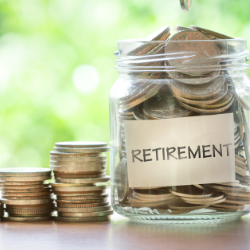Striking the Right Balance Between Saving and Investing
August 13, 2018

You may have heard the advice, “Pay yourself first.” The idea is to set aside a portion of every dollar you receive and use that money for saving or investing. But which one should come first: Saving or investing? Or should you save and invest at the same time?
Generally speaking, it’s best to save before investing, but once you have a healthy base of savings, it’s best to do some of both. More specifically, I recommend using three percentage-based guidelines: 10%-15%, 100%, and 80%/20%.
10%-15%. This is the overall percentage of your monthly gross income to aim to save/invest each month. If that seems overwhelming, start where you can and work your way up from there.
Let’s say your monthly salary is $6,000. Ideally, you would commit to saving $600-$900 per month. To give an example, let’s say you’re able to set aside $700 per month.
100%. If you don’t have an emergency fund, or if you don’t have enough money in such account, this is the percentage of your $700 to put into savings each month—in other words, all of it.
Financial advisors often recommend building an emergency fund that could cover three-to-six months’ worth of essential expenses, and that’s good advice. In life, there’s a lot that can go wrong, such as the loss of your job.
If you have relatively few movable breaking parts in your life (you’re single or married but without kids, you live in an apartment, your car is in good shape, and your job is secure or your job skills are in demand), three months’ worth of essential living expenses may be enough for your emergency fund. But if you have more riding on your paycheck (you’re married with kids, you own a house, and your job doesn’t feel all that secure), aim for six months’ worth of essential living expenses.
80%/20%. Once you have a sufficient emergency fund built, take most (80% is a good target)—but not all—of the amount you had been putting into savings and redirect it toward investing. For example, if you had been putting $700 of your monthly income into savings, once you have your emergency fund built, put 80% ($560) into an investment account each month, such as a 401(k) or 403(b) plan where you work or an IRA, while continuing to put 20% ($140) into savings. This additional savings is for the eventual replacement of big-ticket items like your car.
Except when…
There is one possible exception to these guidelines. If your employer matches some of the money you contribute to its workplace retirement plan, that’s such a good deal you should try to take advantage of it as soon as possible.
So, if you’re still building your emergency fund, see if you can do both—build savings while at the same time investing enough in your workplace plan to get your employer’s full match. This will be easiest if you can afford to set aside 15% of your monthly gross income for saving/investing.
An employer match is usually based on 6% of salary. So, to go back to our example of a monthly income of $6,000, you would put $360 (6%) into your workplace retirement plan each month while putting $540 (9%) into savings.
If you can’t do both, build savings first—as painful as it would be to miss out on the match.
The danger of misplaced priorities
If you’re tempted to invest before building a solid base of savings, consider this: What would happen if you had a financial emergency? You may be able to borrow some of the money in your 401(k) plan account, but that comes with a risk. If you leave your company—by your choice or your employer’s choice—you’ll have to repay the entire loan, usually within 60 days. You may also be able to take a hardship withdrawal, but you’ll have to pay taxes and a 10% penalty on the money.
So, prioritize savings first. After you have enough in savings for an adequate emergency fund, make investing a higher priority, while continuing to add some money to savings each month for the replacement of big-ticket items.
Matt Bell is the author of Trusted: Preparing Your Kids for a Lifetime of God-Honoring Money Management. He speaks at churches and conferences throughout the country and writes the MattAboutMoney blog.
This article should not be considered legal, tax, or financial advice. You may wish to consult a tax or financial advisor about your individual financial situation.



